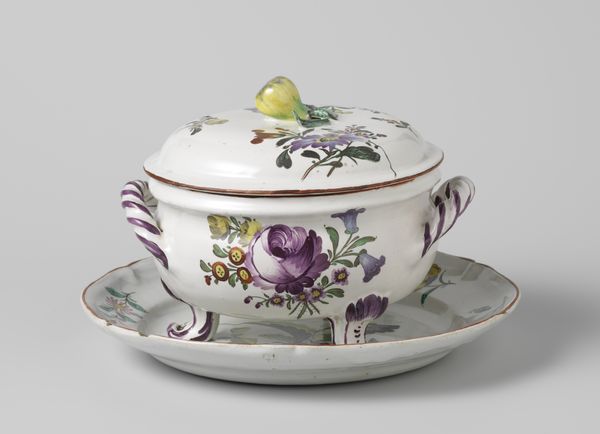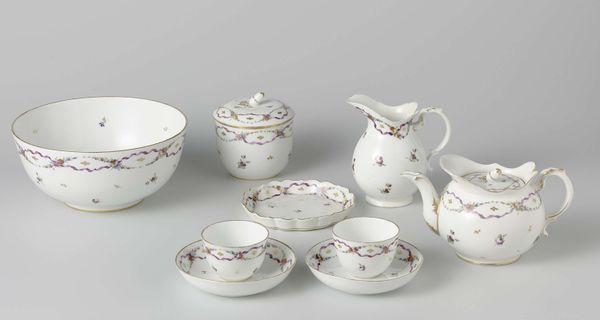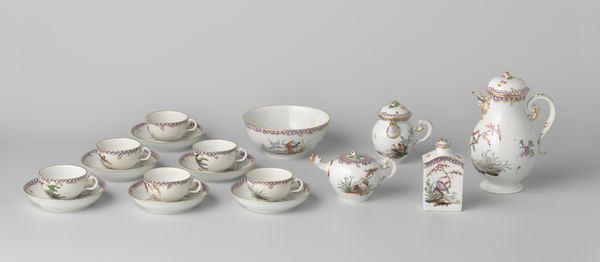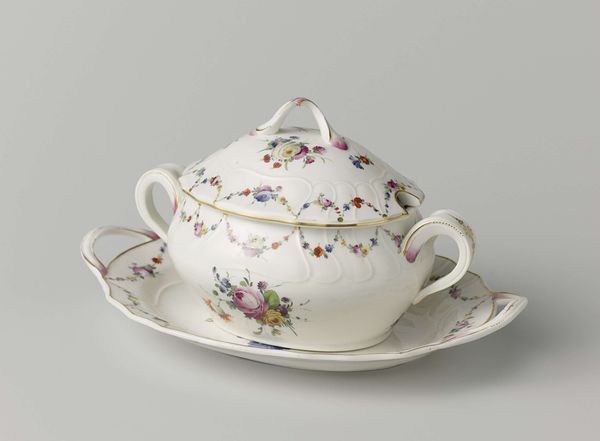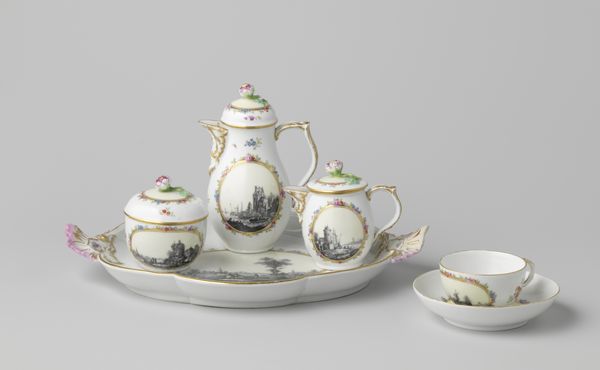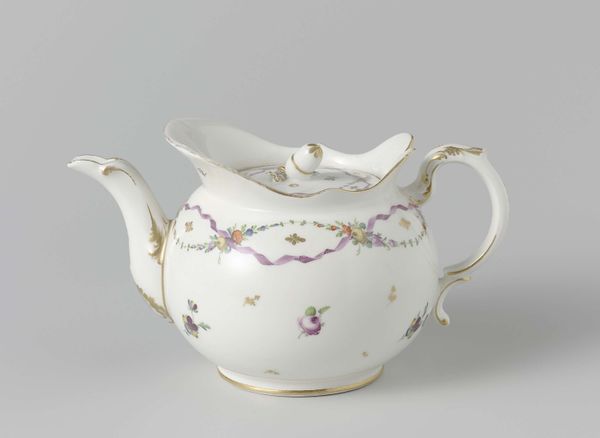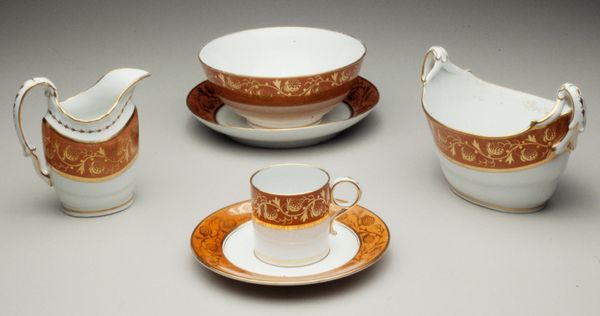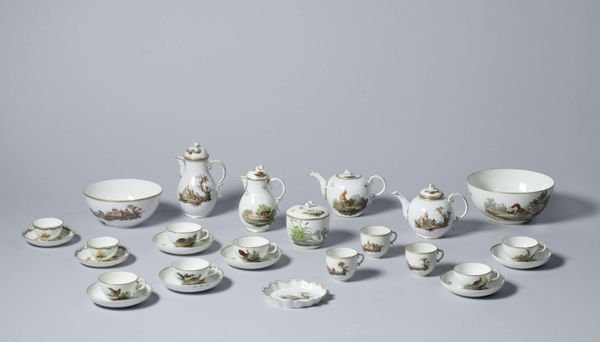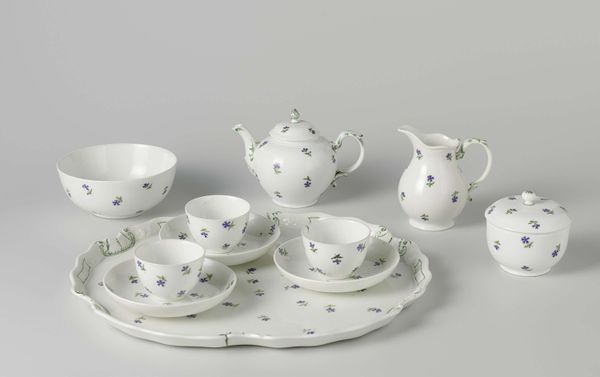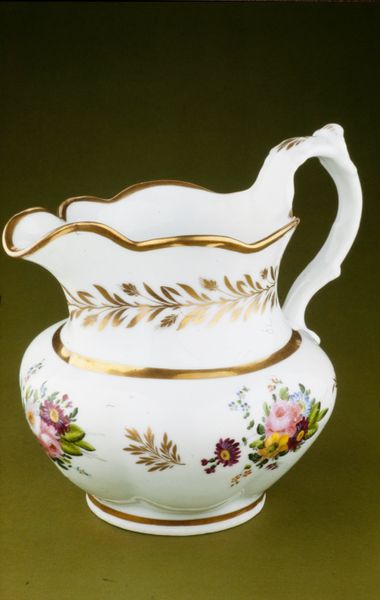
Sugar bowl with cover (part of a set) 1760 - 1770
0:00
0:00
ceramic, porcelain
#
ceramic
#
porcelain
#
decorative-art
#
rococo
Dimensions: Height: 3 1/2 in. (8.9 cm)
Copyright: Public Domain
Curator: This charming sugar bowl, part of a larger set by Meissen Manufactory, dates back to 1760-1770. Crafted from delicate porcelain, it perfectly exemplifies the Rococo style. Editor: It strikes me as extraordinarily delicate, almost frivolous. The pink and gold latticework against the pale porcelain, plus the figures...it suggests a very specific kind of leisurely opulence. Curator: Rococo certainly embraced lavishness. Porcelain itself was a symbol of status, and Meissen, of course, held immense prestige as one of the first European manufacturers to master its production. Look closely at the imagery; they speak of courtly love and pastoral leisure. The sugar bowl presents small vignettes that recall an imagined Arcadia. Editor: That imagery is hand-painted, isn’t it? Imagine the labor involved. Mining the kaolin, formulating the paste, shaping and firing… all of that to produce a receptacle for sugar! There’s a story of material exploitation tied into every cup of tea served from this. Curator: Absolutely. Porcelain represented transformed earth. To then decorate it with classically-themed depictions is to doubly imbue the piece with meaning. The choice of motifs – playful nymphs, idyllic landscapes – tells us so much about the tastes and aspirations of the elite at the time. The image creates nostalgia for a lost Golden Age. Editor: It does invite daydreaming. But that wistful pastoral scene hides the grim realities that enabled its creation. This object signifies luxury only because others have worked hard to provide this refined setting and raw materials. I keep wondering how enslaved laborers in the colonies figured into sugar production and its consumption… Curator: Food for thought, indeed. Ultimately, a single artifact is made up of myriad stories and speaks of the historical circumstances it arises from, even when at first it may present itself merely as a dainty ornament. Editor: True. The appeal, and the unease, lie in the porcelain's capacity to absorb and reflect its historical moment through its design and making.
Comments
No comments
Be the first to comment and join the conversation on the ultimate creative platform.
